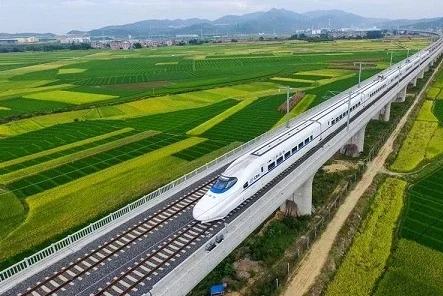
China and Vietnam Move Ahead with Plans to Boost Cross-Border Rail Connectivity
- Business
- April 15, 2025
- No Comment
China and Vietnam Move Ahead with Plans to Boost Cross-Border Rail Connectivity
Report By Safarti Tarjuman Business Desk
China and Vietnam have taken a significant step toward enhancing cross-border infrastructure by agreeing to initiate feasibility studies for two proposed railway projects, aimed at strengthening supply chains and regional integration.
The agreement, signed during Chinese President Xi Jinping’s recent state visit to Hanoi, outlines the commencement of technical assessments for rail links connecting China’s Guangxi and Shenzhen regions with key Vietnamese cities, including Hanoi and Haiphong.
According to an official cooperation document dated April 14, China will finance feasibility studies for two of the three planned railway corridors at an estimated cost of 9.95 million yuan (approximately $1.36 million). These studies are scheduled to be conducted within a 12-month timeframe following the selection of qualified contractors.
Strategic Rail Expansion
The first proposed route will connect Guangxi in southern China to Vietnam’s capital, Hanoi. The second will link the Chinese tech hub of Shenzhen with the northern Vietnamese port city of Haiphong. Both projects aim to modernize and expand century-old colonial-era railway lines, which are currently hindered by differing rail gauges between the two countries.
Despite existing lines like the one from Nanning to Hanoi, current operations face logistical bottlenecks due to gauge incompatibility, requiring passengers and cargo to switch trains at the border. The proposed upgrades aim to streamline transportation and reduce cross-border delays.
Economic Interests Surpass Geopolitical Tensions
Vietnamese President To Lam emphasized that developing the three cross-border railways remains “the highest priority” for both nations’ infrastructure agendas. He urged China to provide concessional loans to facilitate project execution.
While historical mistrust—fueled by territorial disputes in the South China Sea and a brief border war in the late 1970s—has long stalled bilateral rail cooperation, both countries now appear more driven by mutual economic interests than by security concerns.
The estimated cost of the Vietnamese segment alone is $8.3 billion, expected to be partially funded through Chinese loans.
Awaiting Concrete Financial Commitments
Although no loan packages were announced during Xi’s current visit, both sides are preparing to launch what is termed the “Vietnam-China Railway Cooperation.” Details on the initiative remain unclear, and it is uncertain whether the launch includes new financial or technical commitments.
As global trade dynamics shift and U.S. tariff pressures mount, Beijing has pushed for stronger integration with Southeast Asia. The rail connectivity with Vietnam is viewed as a strategic move to reinforce China’s export routes through its southern neighbor.





